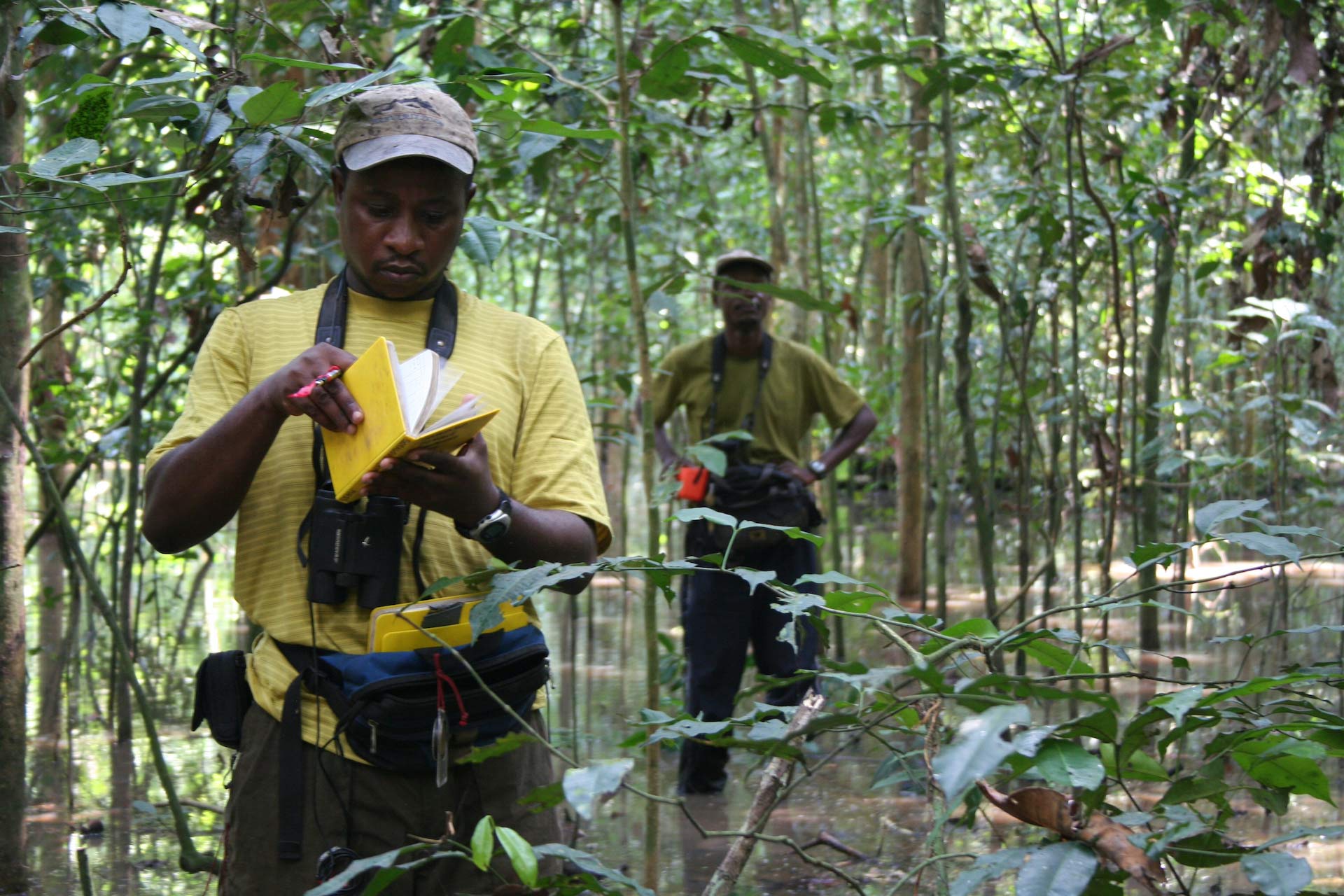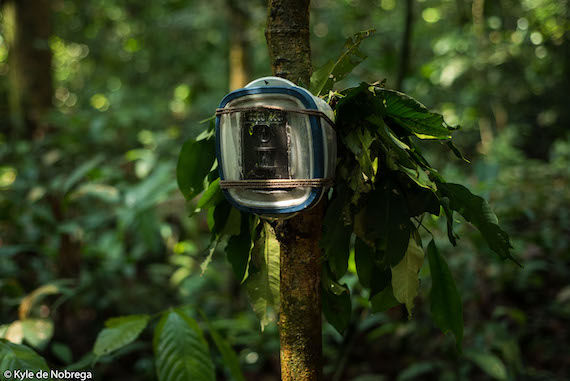
Science
- Study the complex societies of Africa’s iconic great apes
- Partner with local indigenous communities
- Monitor gorillas and chimpanzees across landscapes
- Combat emerging diseases and anthropogenic health risks
- Survey biodiversity and tool-use with passive remote field cameras
- Quantify forest diversity, structure, seasonality and carbon
- Species Identification
Survey biodiversity and tool-use with passive remote field cameras

In 2003, GTAP scientists were early pioneers in remote camera trapping of chimpanzees with the development of “Chimpcams”. Since that time, a sustained effort has been maintained documenting the regular visitation by chimpanzees to termite nests, where these apes feed on termites with the aid of complex tool-kits. The GTAP has 35 remote video units filming in four communities of chimpanzee in the Goualougo. This same study design and approach has also been implemented at MDK since 2017.
Camera trapping effort has also expanded to obtain estimates of biodiversity in the Djeke Triangle. Systematically placed camera traps throughout the study area will enable generation of density estimates of medium to large mammals and bird species. These results will be used to inform government officials on the unique status of this important Intact Forest Landscape and the need to elevate its protected status.


